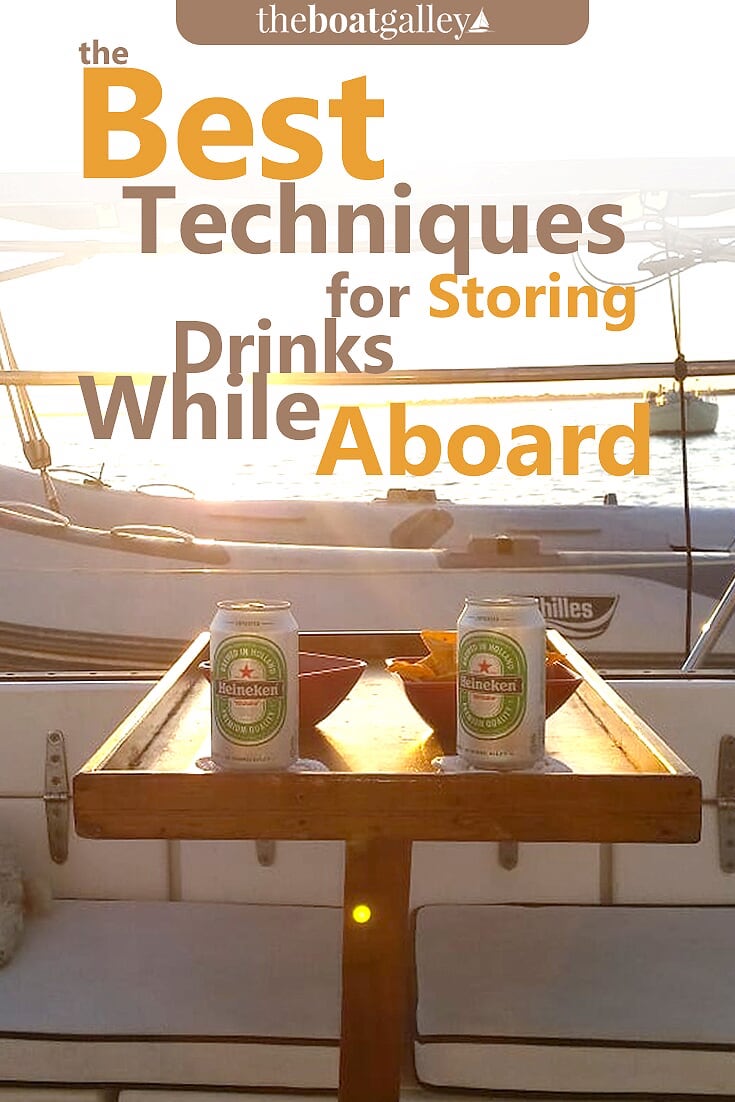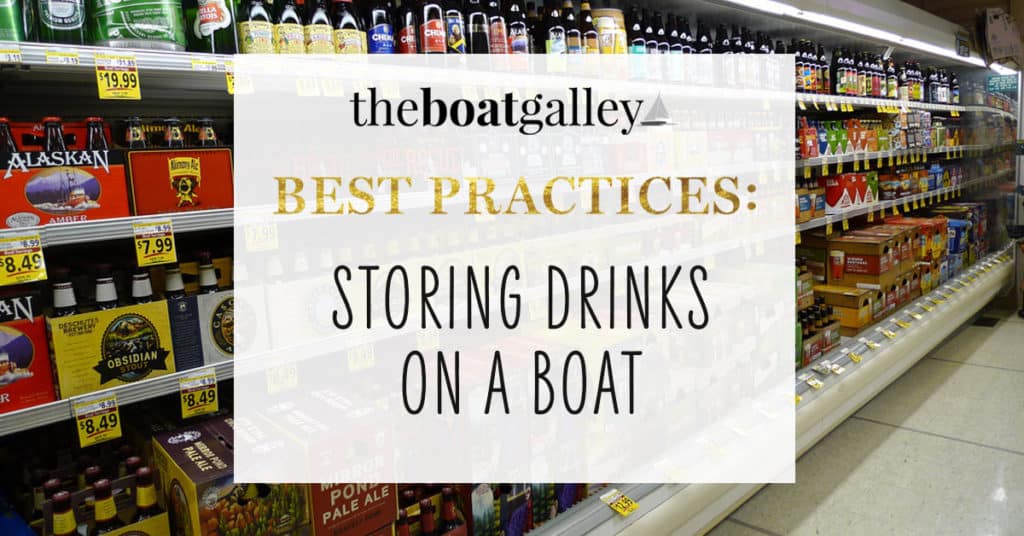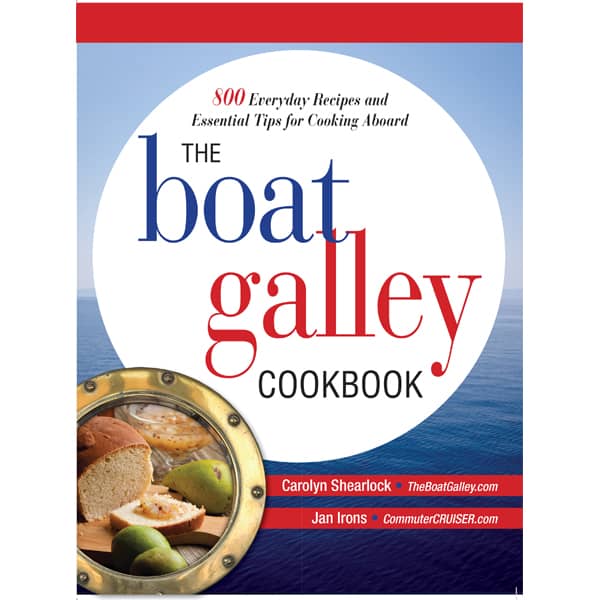
Your stock of drinks takes up a lot of space on a boat even before you put them in the refrigerator or cooler. In six years of living in the tropics, where we went through a LOT of drinks, I learned a few things about storing drinks on a boat.
Pop and beer cans are generally very thin outside the US (and sometimes in the US). Just the cans rubbing against each other or tiny drops of salt water — maybe from when you brought them on board — can make tiny pinholes in the cans. Combat this in three ways:
- Wash and dry cans when you bring them on board, both to get any salt water droplets off and to get any dirt off — you’ll probably be surprised at how dirty cans get if they’re not in totally enclosed cases.
- Store the cans in solid bins (like these Rubbermaid ones on Amazon – they need to be tough), even if they’re inside lockers. This way, even if one does develop a hole, the mess is contained and much easier to clean up.
- Fill any extra spaces in the bins with plastic bubble wrap, rags, towels or whatever else you have to limit the movement of the cans. Not only will they be less likely to develop holes, they’ll also be a lot quieter as the boat moves.
Gatorade, Crystal Lite and other non-carbonated drinks can usually be found both premixed in bottles and in powder form. Your water situation will determine which type is best for you:
- If you have a very limited water supply and need to supplement it with bottled drinks, buy premixed and store the bottles in the same way as pop cans, above.
- If you have enough water, it’s better to buy powdered mix instead of premixed bottles – it’s lighter, smaller and easier to stow.
To store powdered mix that comes in pouches, I found that I had to put the pouches inside Ziplocs or food storage containers as moisture would penetrate the foil pouches. Even if some moisture does make the powder clumpy, it’s still safe to use unless it smells moldy or turns an off color.
Wine bottles seem impossible to store on a boat, but many cruisers do it successfully. Actually, you can use the same technique for anything in glass bottles and thin-walled plastic bottles that seem fragile — for some reason, cooking oil always seemed to come in flimsy bottles.
The first step is to put the bottle in a tube sock. You can then put it into a storage bin (solid so that if it should break, the mess is contained) and pack other items and padding around it so that it won’t move.
We wanted a little more assurance that the bottles wouldn’t shift with the motion of the boat, and so we made one locker into an upright wine rack. To do this, we took a length of 4” PVC and cut it into 8” sections. These we glued together standing upright in sort of a honeycomb pattern that just fit the locker. We put the bottles of wine into tube socks and stuck one in each PVC tube. Even though there’s a little bit of space between the bottle and the PVC, the sock pads it well enough that we never had one break, and they’re quiet as well. UPDATE: see more on this project.
Boxed drinks, such as milk, juice and wine in boxes are great on a boat for several reasons:
- They’ll last about 6 months in tropical heat; up to a year in more temperate climates.
- They don’t have to be refrigerated until they’re opened.
- They’re easy to stow — they can be tucked in lots of odd sized places, there’s virtually no risks of breakage, and since they’re square they make efficient use of space.
The only real issues in storing drink boxes are to remember just where you put all of the boxes and to be sure to use the oldest ones first, not the boxes that are most convenient. Read more.
It takes a bit to get used to the “new rules” for storing drinks but in time, the procedures for storing drinks on a boat will be second nature!
Read Next

Carolyn Shearlock has lived aboard full-time for 17 years, splitting her time between a Tayana 37 monohull and a Gemini 105 catamaran. She’s cruised over 14,000 miles, from Pacific Mexico and Central America to Florida and the Bahamas, gaining firsthand experience with the joys and challenges of life on the water.
Through The Boat Galley, Carolyn has helped thousands of people explore, prepare for, and enjoy life afloat. She shares her expertise as an instructor at Cruisers University, in leading boating publications, and through her bestselling book, The Boat Galley Cookbook. She is passionate about helping others embark on their liveaboard journey—making life on the water simpler, safer, and more enjoyable.
Simplify meal prep on board with proven strategies for provisioning, maximizing fridge space, and cooking delicious meals aboard your boat.










John Mayton says
When we were living on Nightrainbow, our ODay 40 in Newport Beach our pots were stackable, but the lids were not. They would rattle and ring, find a way to go adrift no matter what we did. In the galley we had a number of shelves and cabinets with flat bottoms underneath. I took a couple of small bungee cords, along with several SS pad eyes and attached these to the bottom of a few cabinets. I measured the lids, attached the pad eyes a little wider then the lids, and ran the paralled cords through the pad eyes, smaller lid sizes and one end and larger at the other. A figure eight knot on the ends of the cord to hold them in place. To store a lid I just pulled down on the cords, put the lid under the shelf with the handle facing down. When I released the cords they would be on either side of the pot lid handle, the elastic cord held the lid tight to the shelf, and the lid was stuck to the bottom like an abolone. No rattle, ringing, or going adrift. Handy to get to when needed and it kept the wife happy. It look pretty cool too.
Sailing Banyan on Facebook says
Great tips for the wine bottles 🙂 might just have to try that !
Sami Bolton on Facebook says
two words: Soda Stream. If you drink a lot of soda this will change your world.
Sue says
Re soda stream. They are fantastic but the gas bottles are unobtainable in S E Asia. And I haven’t seen the syrups either.
The Boat Galley on Facebook says
And on your recommendation — and that of several other readers (I love getting everyone’s opinion) — I did post an article on the Soda Stream, too. Wish it had been available when we started cruising! https://theboatgalley.com/sodastream/
Marty Crichlow says
We enjoy some of the box wines. We found a storage box on our Ericson 35-2 that was for winch storage. Well it moved to a forward bulkhead and ended up with a stereo speaker installed. As it was rather large, we found that a wine box bag (minus the box) fit perfectly in one end and with a hole saw made a perfect opening for the spigot. Voila! Draft wine!
Carolyn Shearlock says
Love how cruisers come up with great uses for things!
Susan Parker says
We once had a disaster with exploding soft drink beer cans. What a mess to clean up. Now, we don’t leave home without our SodaStream.
Penny Kingsbury says
We have switched to Soda Stream now, but once did carry soda cans. We have a dishwasher on board that we never use since we had to make water. It was a great place to store cans. If one exploded, I just pulled out the cans and ran the dishwasher to clean it up.
Mike Sweeney says
Storing canned drinks vertically, not on their sides, makes a difference too. Dealing with leaking soda and beer cans was a regular occurrence for us on the charter cat.
Roy Hulse Cox says
suitable shelving by the look of it …. 🙂
Frank K. says
I was stationed on a U.S.Coast Guard 82′ patrol boat, and we had just re-provisioned the boat.. Being it was out last night on SAR (Search & Rescue) patrol, we didn’t bother to securely store the dozen cases of soda/beer cans, and just sort of lashed them down in their cases..
At 1:38am we got the call, and within a 1/2 hour we were heading into 25 ft seas.. One may not realize it, but as the boat crested each wave, the bow would drop about 75′.. Needless to say not only did the cans come loose, and roll around everywhere below deck, they were flying all over the place.. And yes, it was a real mess and a lot of the cans were punctured and sprayed their contents all over the place.. It would have been a lot easier if we hadn’t been lazy and properly stowed the cans the night before.. It was no fun trying to do so heading into 25′ seas..
flk k
Carolyn Shearlock says
25′ seas don’t sound fun to begin with . . . but with flying, spraying cans everywhere? No thanks!
Scott Kraft says
Our wine storage is simple and costs nothing. Go to any good wine shop that sells champagne. Ask the merchant if they have any of the pressed cardboard that is between the bottles of champagne in their case. They are shaped to hold 4 bottles laying down. We place these cardboards in a locker under a setttee. In our case, we can get 1 1/2 of the dividers across the locker and place two deep. The cardboard cuts easily with a knife or scissors. They keep a case of wine laying down, beneath the waterline and not rolling. We find that the cardboards lasts three season – providing there is no water up to the floorboards.
Carolyn Shearlock says
Something like that can work, but we prefer not to use cardboard as bugs love to make nests in it. Also, we’re in a really humid climate and the cardboard tends to lose it’s shape rather quickly as it picks up the moisture from the air.